Elite Dangerous is complex and enjoyable, something truly impressive for any space fan. The craftsmanship is incredible and comparable to the quality of GOTYs, simulating space fares accurately while keeping it fun for a long period.
Steam: Released
Type: Multiplayer
Genre: Space, Simulator, Action
Politics, Openworld, MMO
Developer: Frontier Developments
Publisher: Frontier Developments
Release date: 2 April, 2015


What’s it about?
Elite Dangerous is the third sequel to 1984’s genre-defining Elite, bringing the original open world adventure game into the modern generation of gaming, taking the features that made its predecessor unique and improving them to make the most use of the tools currently available. Elite Dangerous is, by far, the biggest sandbox experience out there, and that is not an overstatement by any means with over 400 billion star systems available in the Milky Way for exploration, rendered along with their stars, planets, moons, asteroids, black holes, nebulae and other space phenomena in their glorious proportions. The Milky Way of Elite Dangerous is placed in the third millennium, an age of exploration and conflict where humanity has discovered faster-than-light travel and started expanding and colonising a part of the galaxy, affectionately nicknamed “The Blob”. That’s where pretty much all gameplay goes on, but all the 400 billion star systems are visitable, and who knows what the developers may have hidden in those.
In such an enormous environment, a human CMDR (how players are called) are tiny drops of water among huge oceans, but that doesn’t mean CMDRs’ actions are not accounted for! CMDR deeds directly influence The Blob, as Elite Dangerous also simulates a political intrigue between local star system factions and major superpowers that have control over innumerable locations. A star system in Elite Dangerous is not a mere static prop and filler, but a living and breathing being that can react to actions taken by local CMDRs. A star system might fall sick to disease if CMDRs fail to deliver medicine, making it easier for conquest. A star system might fall victim to piracy if CMDRs harass cargo freights or murder patrols — or sponsor anarchy. A star system might be affected by poverty if CMDRs harass cargo freights or sabotage commerce. Essentially, each one of those effects has a different buffer that affects all CMDRs within the star system, and might even affect the local authority by a major power. Every CMDR has the power to change the in-game universe of Elite Dangerous. They are part of a well-thought galactic ecosystem.
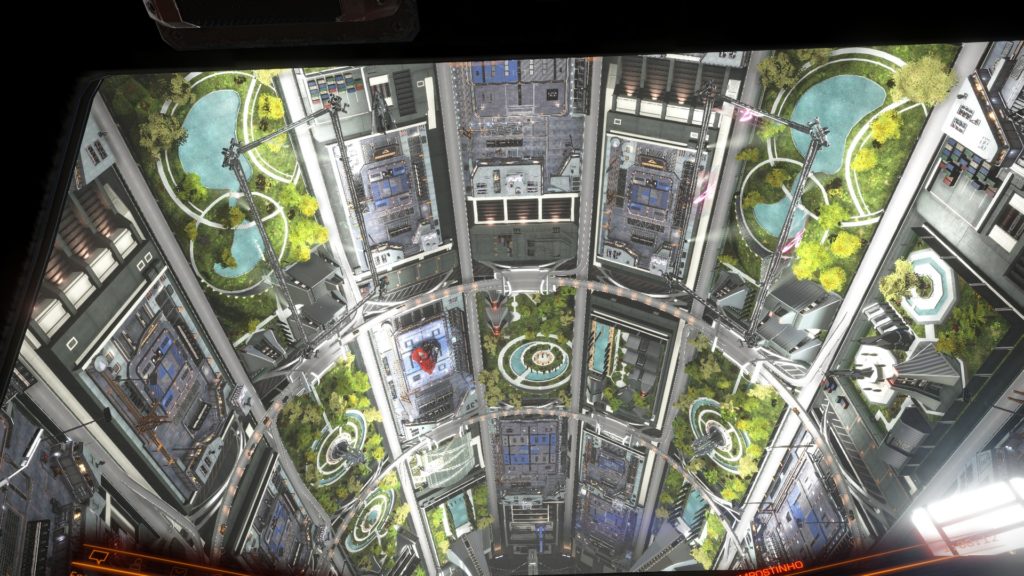
To those of us fascinated by the cosmos, Elite Dangerous is a dream come true. Who hasn’t caught themselves wondering what is beyond the blue clouds of Earth? Beyond the boundaries of Sol? Elite Dangerous takes sandbox to the next level by being one of the most immersive experiences out there, with not only a faithful simulation of spatial mechanics but also diverse gameplay. Interested in becoming a bounty hunter and sustaining the current faction regime? That’s possible. Interested in mining and supplying the local industry to be part of a star-system-wide economic boom? Why not! Interested in visiting the deepest and darkest corners of the Milky Way to help further human control of the galaxy? Great idea. Elite Dangerous presents a fantastic sandbox experience, stunning eye-candy and content that will please any space fan for hours.
All of that sounds good — and is definitely good — but given Elite Dangerous is an MMO, one may wonder about the player base. How is the game doing? How is the community? Are star systems populated or enormous sub-Saharan deserts? No need to worry, Elite Dangerous is surely healthy. According to SteamCharts, Elite Dangerous had an average player base of 4819.3 in The Last 30 Days, a +34.27% gain when compared to June 2017. This means that, at any given time, the average number of players online was about 4819, which is more than enough to guarantee that surprise factor when jumping into a star system and discovering it was a trap set up by PvP CMDRs, or being chased by adversary faction members after a quick visit to an enemy star system.
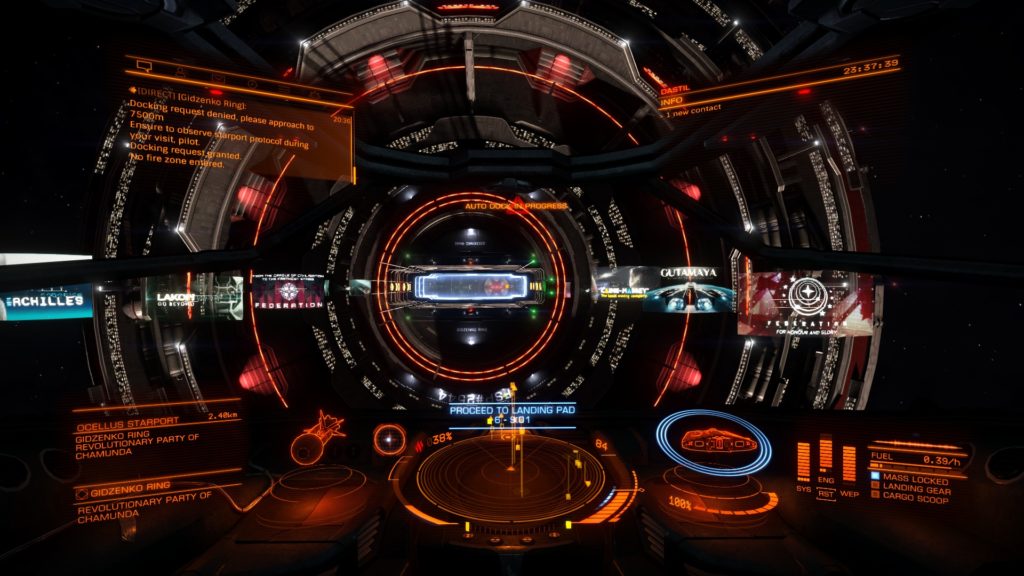
Elite Dangerous is, literally, a huge game, making it impossible to point all it’s features in a review without making it over 5000-words-long. In fact, HowLongToBeat reports that it is necessary to put in a staggering amount of hundred hours of gameplay to beat the main story — which probably means in-game deeds and experience, given Elite Dangerous is an MMO without a clear storyline. A good way to scratch a bit of the surface of Elite Dangerous would be to highlight its major points, which are the mechanics that help make Elite Dangerous a unique experience.
Commerce and Economy
If there is something that is really weird in massive multiplayer games or even open-world games it is commerce. After annihilating entire dungeons of skeletons or eradicating a zombie horde, the closest merchant will gladly buy the tonnes of items and simply not do anything with it. Even if those items were, say, food, there won’t be a noticeable influence in the surrounding environment as the merchant re-sells the food items brought to him — yes, they simply disappear, poof! Elite Dangerous creates an even greater immersion by taking in account regional trade and how it influences the star system. Whenever a star system undergoes famine, the aspiring factions will start issuing courier orders, purchase orders and the like to bring in food, and whether or not CMDRs abide thsi will determine the fate of the star system, as a united CMDR group could deliver food supplies to a chosen aspiring faction to make it more popular among the population and eventually change the ruling faction of the star system.
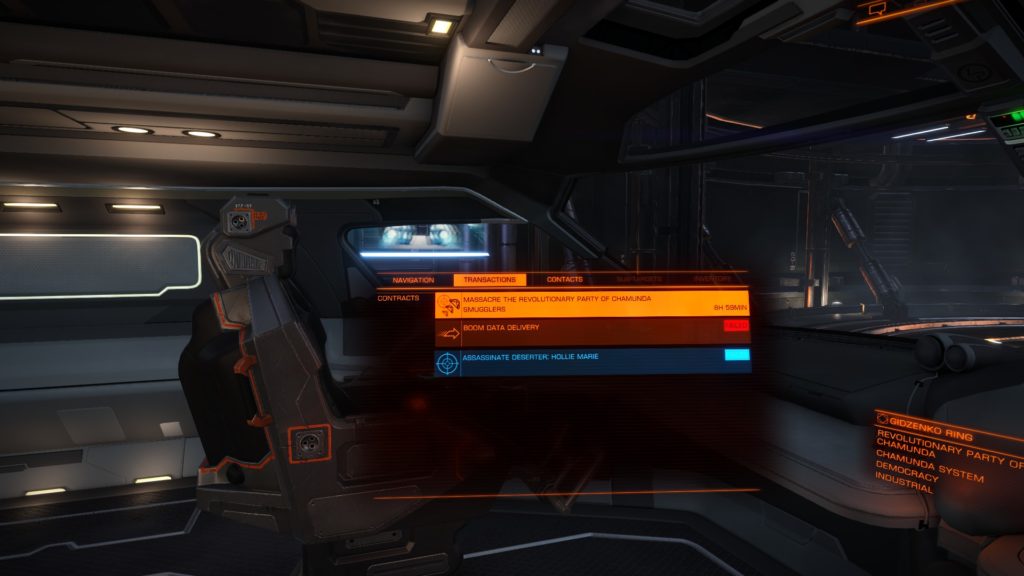
It’s one of the ways Elite Dangerous turns an otherwise generic RPG mechanic such as commerce into something deeper and more complex, where CMDRs have the tools to bring prosperity to their home star systems and destabilize adversary star systems. Also, given that Elite Dangerous has a vast amount of tradable goods and information, the possibilities of shaping the world are impressive. The delivery of crucial information and data may lead to economic booms or strategic superiority to a faction, medicine will strengthen the system’s populace and building supplies will allow it to expand faster, all of which support the greater fight among the major galactic factions (Federation, Alliance and Empire).
The commerce of Elite Dangerous is one of the major mechanics of the game, vital to creating living star systems that react to player actions. Depending on the missions and goals accomplished by CMDRs, the in-game scenario of the Milky Way and the living “Blob” is modified.
Roleplaying
Elite Dangerous wouldn’t be complete without the possibility of role playing, which is also dynamic and players can change their roles at any time. For those hoping to explore the universe, their exploration will award them experience points towards a higher exploration rank within the Pilot Federation, which in turn allows for riskier quests when dealing with NPC factions. A high-level Trade role makes more trading quests available from factions, getting more and more challenging as the rank progresses, with better rewards as well. CMDRs are free to play as they wish, as Pilot Federation ranks are persistent, they can simply dock their current merchant transport ship and use a fighting spaceship to play the role of a Bounty Hunter, annihilating the dangerous bandits that roam the Milky Way, gaining experience towards their combat ranking in the Pilot Federation, which in turn awards riskier combat quests, similarly to how the trade role works.
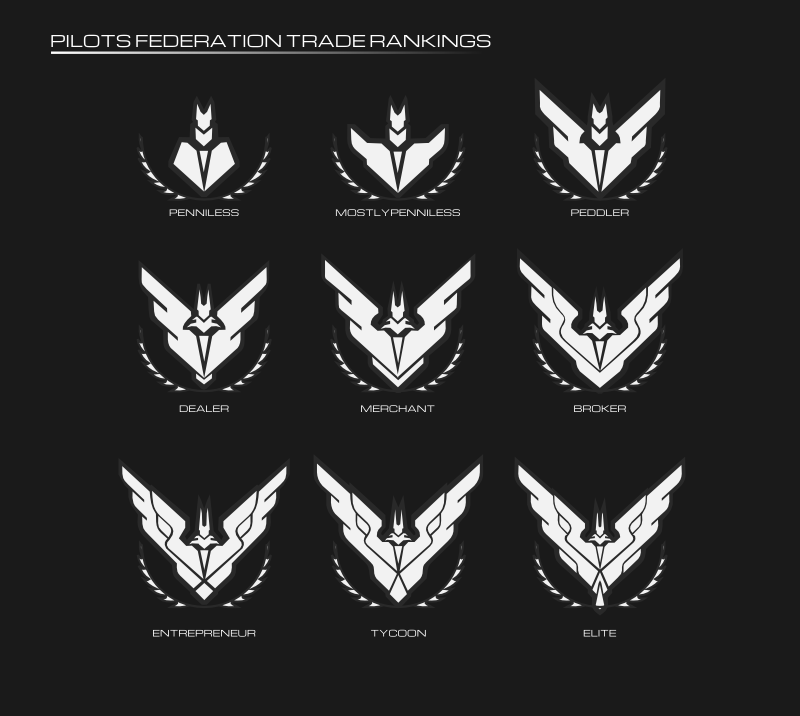
All CMDRs in-game are members of the Pilot Federation, which is an organization that keeps track of players’ prowesses and shares them with interested factions, that may or may not allow certain dangerous quests to be handled by a CMDR. The most important ranks tracked by the Pilot Federation are three, and they encompass trading, combat and exploration, followed by a not-so-important CQC ranking, which kept track of CMDR prowess in the Arena mode.
While those ranks reflect directly from how a CMDR spends their time in Elite Dangerous, they don’t restrict gameplay by limiting what a CMDR can do, it’s simply a way of rewarding continued experience in a certain field, while not keeping a CMDR tied to that field, as they can change their playstyles on the go.
Multi-crewing
The recent 2.3 update, also known as the Commanders Update, is part of the Horizons Season Pass, and it adds a much anticipated mechanic to Elite Dangerous: co-operative multi-crewing. This allows CMDRs to play together over vast distances by using a quick drop-in/drop-out system, powered by a Holo-Me feature, which projects a CMDR inside another spaceship. Multi-crew was designed to be used with as few barriers as possible, making the experience much more friendly and enjoyable when considering the game is a space simulator. For those without many friends to play with, or simply fans of solo gameplay, The Commanders Update added the possibility of hiring mercenaries (NPCs) to deploy and engage enemies in fighter jets during space combat, providing some much-needed support and scouting. Multi-crewing is a truly useful feature, but it does have limitations: only up to three CMDRs may join a spaceship at the same time, that is, given a top-of-the-line space vessel. Lesser ships commonly only include one extra seat, with little control for passengers, making the experience a bit dull during intense combat, as the pilot usually handles the ship tools. A good way to enjoy this to the fullest is to purchase one of the higher-priced vessels, as they tend to have more passenger seats and even hangars, allowing crew members to deploy as fighter jets, powerful against multiple enemies.
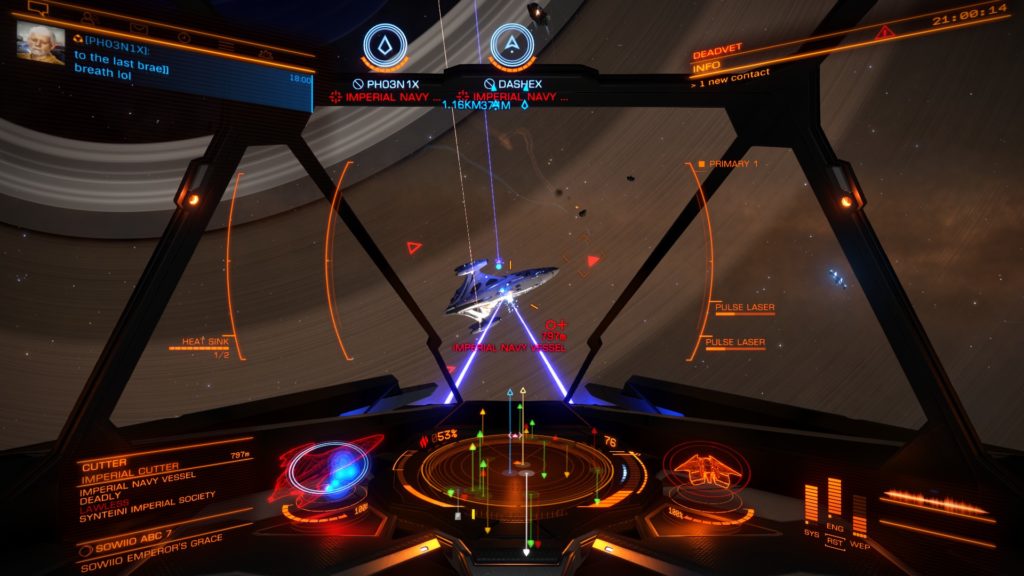
When choosing a multi-crew session, CMDRs can pick from a diverse array of options, going from bounty hunting and exploration to mentoring and mining operations, and the profits are shared fairly and proportionally to passengers’ efficiency.
Galactical Powerplay
The political portion of Elite Dangerous is called Powerplay, a feature that adds to the immersion of the game as it actually modifies the living area of Elite Dangerous, as major factions compete for the dominion of local star systems, which are controlled by local aspiring factions that gain popularity — or lose — as events unfold in the area. Any commander of a certain experience can enjoy the Powerplay and join a liege’s navy, but it’s an important choice and it’s necessary to keep in mind other factions actively hunt and kill adversaries found, and the possibility of being interdicted during a courier mission or the like is real, and there is no easy opt-out prior to picking up a courier or trade mission as deserting a faction is passive to punishment. The Powerplay of Elite Dangerous encompasses what has been written before regarding commerce and trade, as CMDRs work together in a region, they actively influence the economy, populace and might even displace a faction from its throne as the leading local faction, and the new leading local faction may disapprove of a major faction and pledge the star system to a different power or outright decree independence. The way this shapes gameplay is impressive, as the leading local faction will offer more quests to local CMDRs, which in turn means they will have more support as it is more likely for their quests to be accomplished, furthering their own plans, commonly developing expansion or more control.
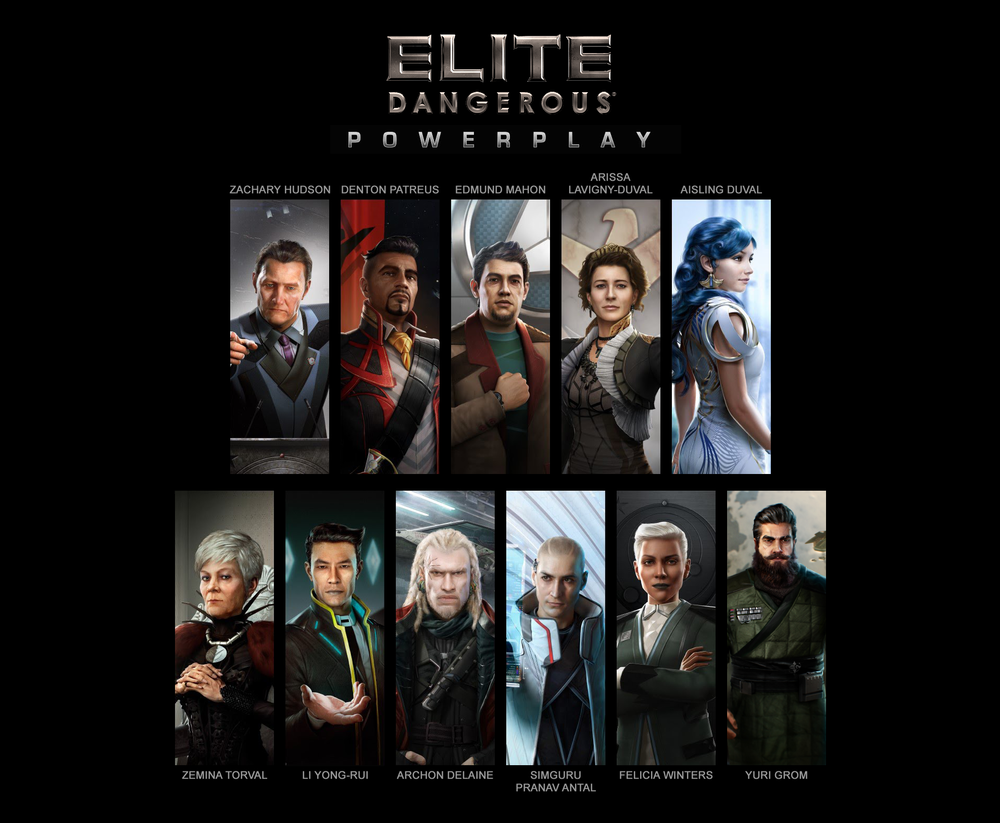
The landscape — or spacescape? — of the living area of the Milky Way is shaped daily by the actions of independent or pledged CMDRs, and a previously safe trade route for an imperial subject may become, suddenly, a hostile route, as the star systems change their pledge. An example of how this could affect nearby star systems is a somewhat increased delay to receive goods, as merchants that continue through hostile routes are shot down or go through new routes, which may be pestered with thieves or simply take way more jumps. Those delays, in turn, create unrest in the star system, again changing the faction and it so goes. While a simple example, it pinpoints the importance of the PowerPlay in Elite Dangerous, a complicated topic that is better explained in manuals or wikis. This Elite Dangerous Wikia has an objective definition of the PowerPlay feature:
Powerplay is an ongoing battle for interstellar conquest and control in the galaxy. Powers are powerful individuals and organizations which players can pledge allegiance to help guide their strategy, and take on special objectives to advance shared goals. Player choices and actions have a direct and visible impact on the balance of galactic power.
Alien Wildlife
The Thargoids have been long known as an alien species in the world of Elite Dangerous, but their direct appearance in Elite Dangerous will be unveiled a few months from now when Frontier Developments release the 2.4 update, which will make the Thargoids a more significant part of the gameplay. Although the Thargoids are merely mentioned at this point, they are already out there, and it is possible to visit them. They have been hyperdicting CMDRs out of Hyperdrive — FTL travel — since January, but their actual planets have been discovered in late June, after supposed pictures of Thargoid vessels and outposts were taken. Such a fantastic event mixed with an active community couldn’t have gone better and within a few days multiple planets were found and tagged online as Thargoid areas. It is a complicated feat to get to those Thargoid outposts, requiring planetary landing and survey of terrain, that is, without mentioning the need of actually finding an Unknown Artifact — an alien object — to interact with Thargoid structures.
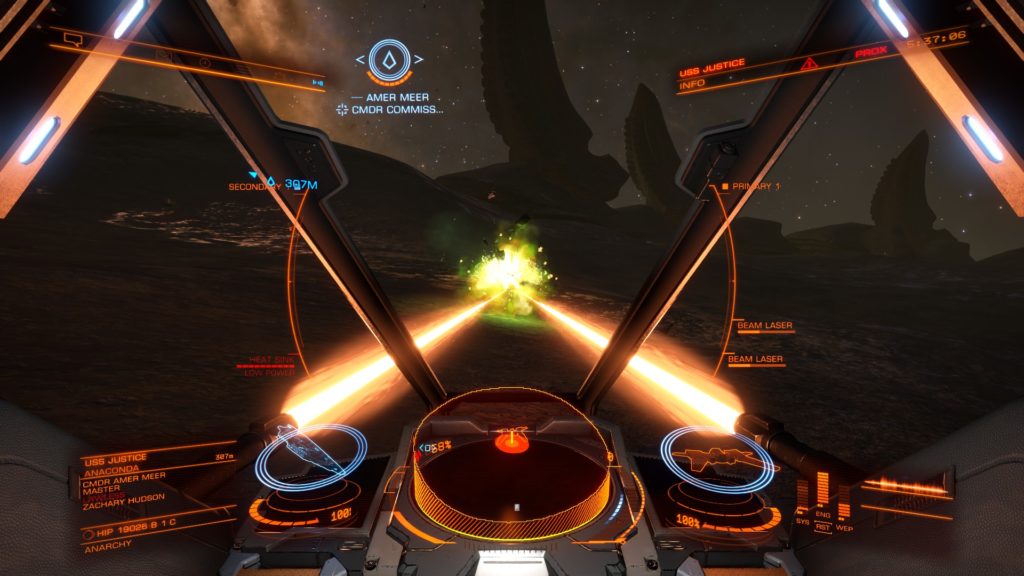
A few days after starting Elite Dangerous in early July, I decided to try out the multi-crew mode and join an exploration crew to explore the farthest locations of the Milky Way. Giving credit entirely to my own luck, I was assigned to the USS Justice led by CMDR Amer. The commander of the spaceship had a great interest in having a look at the nasty Thargoid bugs and asked if I was interested in joining him, and, well, that’s where my funniest adventure started! CMDR Amer explained to me what a Thargoid was, what we were looking for and why an Unknown Artifact was needed. Apparently, to activate the structures of a Thargoid base, it’s necessary to use the powers of an unknown artifact found in Thargoid ships, some sort of bio-verification technology, similar to retina scans, allowing us to interact with their structures. CMDR Amer steered the ship and activated hyperdrive to a star system where an unknown artifact was reported.
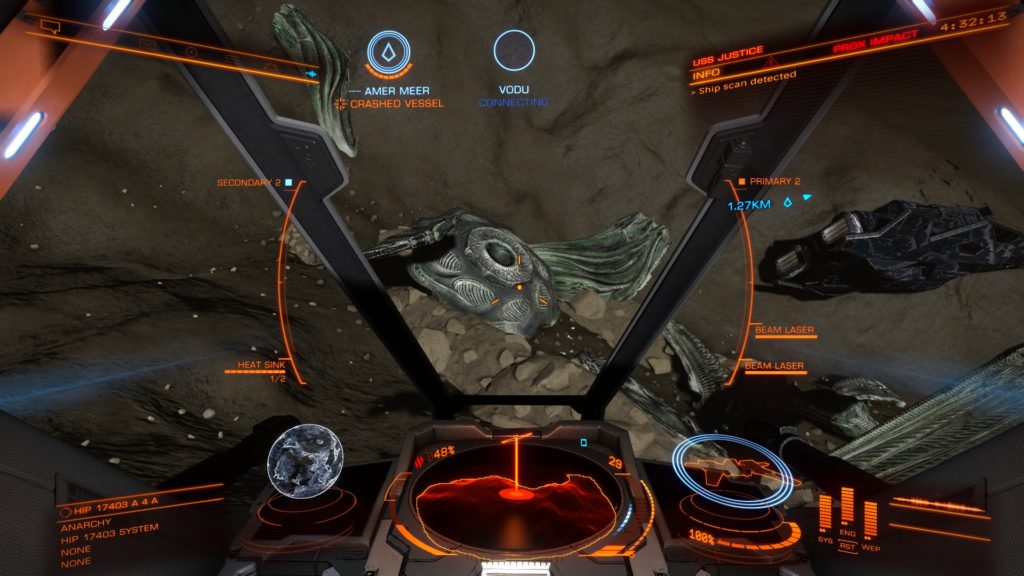
As soon as we arrived in the Star System, the commander of the vessel went full speed towards the planet and we surveyed the land from above, hoping to find traces of a long-lost alien spaceship, which didn’t take long. I deployed as a fighter jet to verify the terrain, and we both got our ships and cargo scanned by another unknown spaceship, but that ship went away and we turned our attention to the matter at hand: an unknown artifact has been found. the reports were accurate. CMDR Amer didn’t take long and deployed as a ground vehicle, what sadly disconnected me from multi-crew until the unknown artifact was recovered and I was invited back into the crew. We quickly left the planet with a destination in mind: the Thargoid base. If the reports were accurate, there would be one at HP 19026 B 1 C. Shortly after leaving the star system, we were targeted by pirates, but nothing the firepower of USS Justice couldn’t cope with — along with my help as a support fighter jet. CMDR Amer engaged Hyperdrive and we went for the Thargoid base in HP 19026 B 1 C. Although we tried to be fast, we arrived at the Thargoid base an hour after finding the Unknown Artifact, be it due to pirates or report reading, but it was sure worth it. We entered the orbit of the planet and surveyed the land from afar once again, looking for signs of alien buildings, which were quickly spotted after ten minutes of flight. I deployed as a fighter jet once again to verify the terrain and decided to dispatch myself of some inoffensive wandering aliens, commonly called scavengers. They exploded in a shower of grotesque green goo. Now, that was fun! After scouting the terrain and reporting my findings, CMDR Amer landed with his ground vehicle — that cut me off from the multicrew, Frontier fixed that — and explored a bit. We kept our microphone communication and I was told about his findings; Thargoid tunnels. Was this Thargoid base was some sort of outpos, or beacon for future fleets? Who knows. What I do know is that Frontier did a good job on this. Instead of releasing it in one go, they gradually inserted Thargoids into the world of Elite Dangerous, blending them well and making the CMDRs familiar with them. Although, there was no profit to be made from this adventure, it was one of the most interesting journeys I had in gaming for a while! You would expect only single-player games to deliver such mystery and suspense, but Elite Dangerous is a MMO and not only that, its a simulator. On top of that, it has no clear storyline. We, the CMDRs, create our own expectations. We create our own mystery and suspense. Elite Dangerous is a sandbox experience that will be a referenced for the future of gaming.
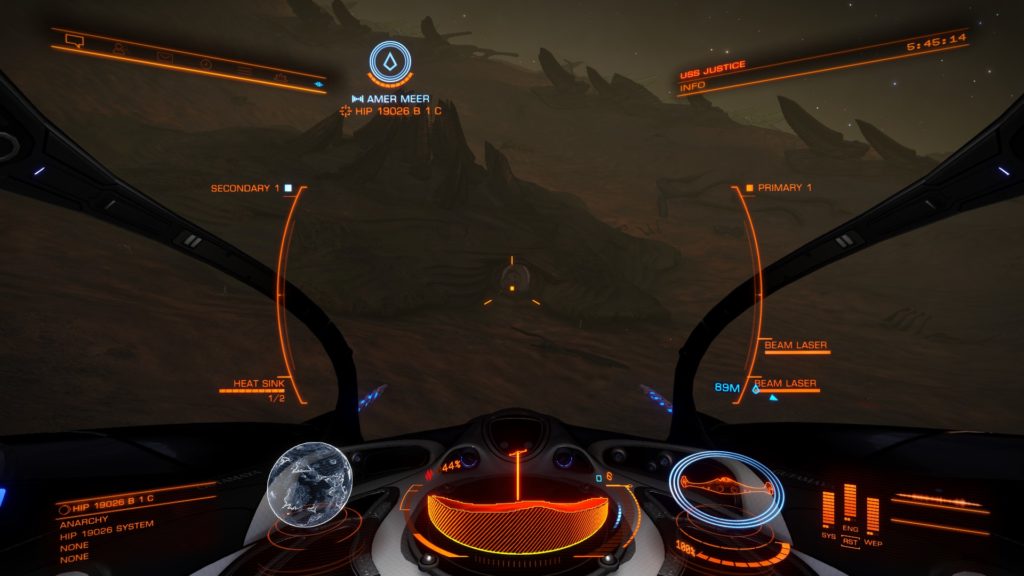
Final Thoughts
Elite Dangerous sets a clear example of a sandbox game done right. It is not a easy game. It is a complex simulator that takes simulation to the next stage, coupled with immersive gameplay and incredible visuals that will bring any space-loving human to their knees in face of such a glorious experience. While overwhelming at first, the passion put into the game shows. Frontier Developments is a development team that shares in the excitement of its players. The people behind the game clearly are fascinated themselves, making an experience that they approve of. It’s made by space fans for space fans. With that said, it is fair to remember that the game will not be appreciated by those who are not interested in the unforgiving — but fair — gameplay. Elite Dangerous does not abuse its players with unnecessary hardship, it simply does not forgive mishaps. It is a fair gameplay that is sure to addict those that decide to give it a chance. The Horizons DLC truly expands Elite Dangerous and it’s a must-have, be it for the new-level cooperative gameplay or planetary landing, Horizons complements an already fascinating experience.
I cannot recommend this game enough for those who love space. Elite Dangerous is definitely worth an Auto-Save rating, the highest available from SaveOrQuit. The contribution of Elite Dangerous to the simulator market is undeniable, and it will be certainly used in the following decade(s) as an example of a complex — yet fun — simulator game. In a certain way, the way Elite Dangerous shaped the simulator market is comparable to the way Mario shaped platformers, Minecraft shaped sandbox games, Worm shaped couch co-op or Quake shaped competitive shooters. It’s no surprise Elite Dangerous managed to hit over 1 million owners on Steam alone, according to SteamSpy.
For those not a fan of space-faring or difficult gameplay, Elite Dangerous is definitely not recommended. Elite Dangerous is complicated and doesn’t chew stuff for lazy lads. But for those that love space, it cannot be recommended enough.

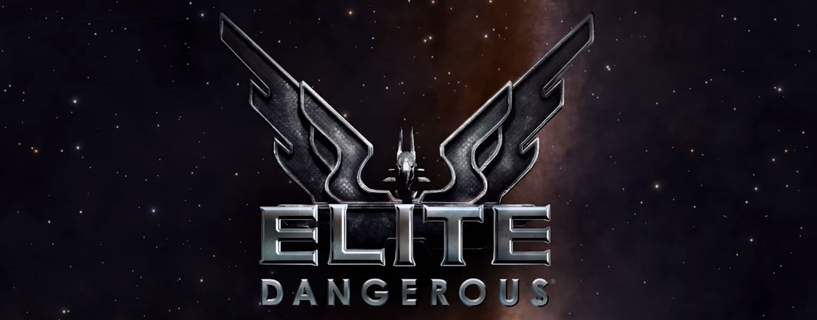









Nice rundown thanks ?
Only just got the game and intend to become a hermit inbthe following months/years ??
It’s so complex it’s a bit overwhelming at first